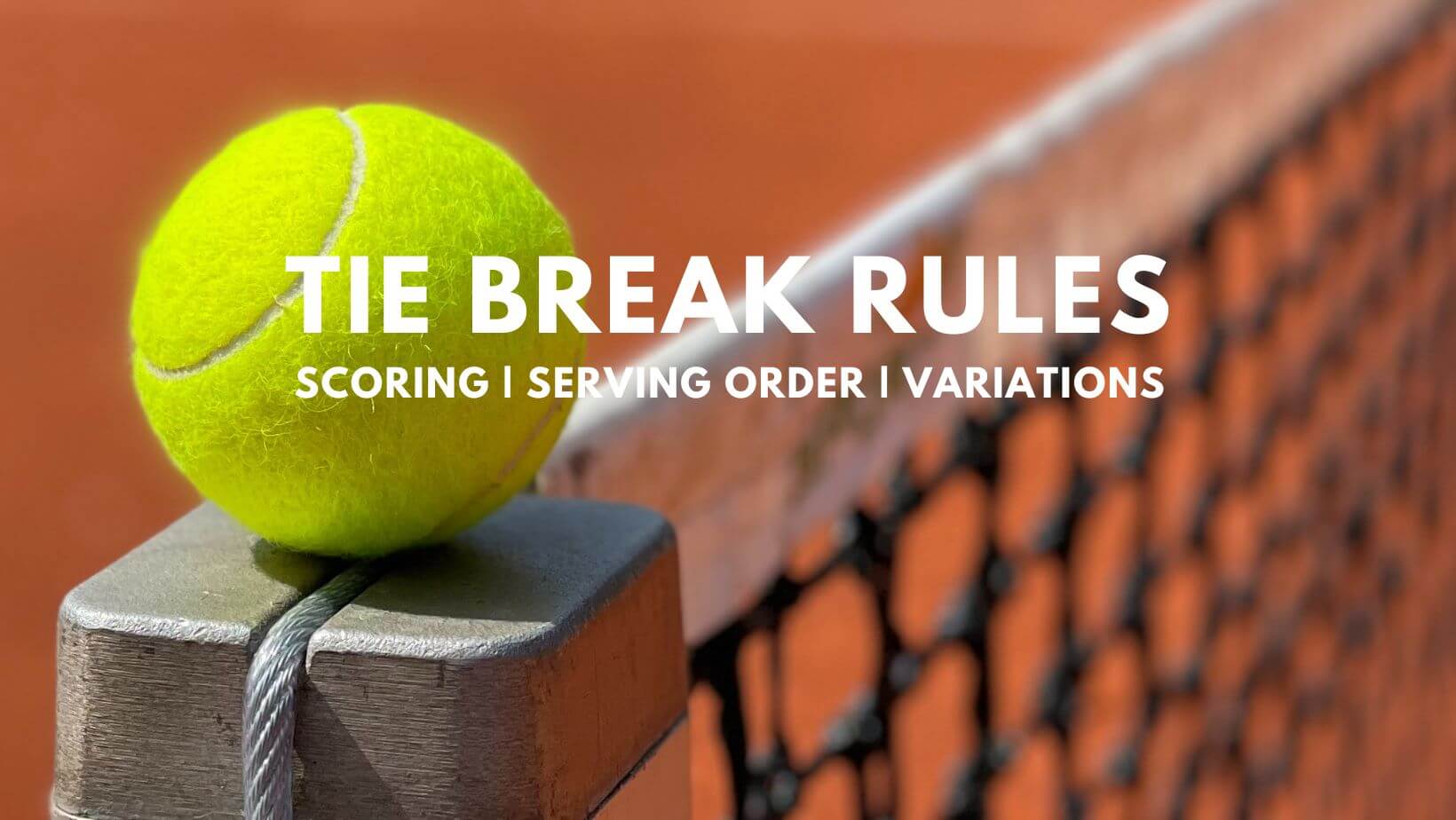Tiebreak Scoring and Gameplay: Tennis Tiebreak Rules

Tennis tiebreak rules – A tiebreak is a scoring system used in tennis to decide a set when the score reaches 6-6. It is a sudden-death format, meaning that the first player to reach a certain number of points wins the set. The tiebreak scoring system is as follows:
- The first point is worth 1 point.
- The second point is worth 2 points.
- The third point is worth 3 points.
- And so on, until one player reaches 7 points.
The player who wins the first point serves the first two points of the tiebreak. The other player then serves the next two points, and so on. Each player serves two points in a row until one player reaches 7 points. If the score reaches 6-6, the player who is serving serves the next point. If the score reaches 7-6, the player who is receiving serves the next point. The first player to reach 7 points wins the tiebreak and the set.
Sudden Death Scenario, Tennis tiebreak rules
In the event of a sudden death scenario, where both players reach 6 points, the player who wins the next point wins the tiebreak and the set. In this situation, the server serves one point, and the receiver serves the next point. This continues until one player wins the tiebreak.
Tiebreak Strategy and Tactics

Tiebreaks are crucial moments in a tennis match, often deciding the set or even the entire match. Employing effective strategies and tactics is essential for maximizing your chances of success during these pressure-packed situations.
Shot Placement
Precise shot placement is paramount in tiebreaks. Aim for the corners of the court, forcing your opponent to cover more ground and creating opportunities for errors. Mixing up the depth and angles of your shots will keep your opponent guessing and off balance.
Consistency
Consistency is key in tiebreaks. Avoid making unforced errors and strive for a high percentage of first serves in. By minimizing mistakes and keeping the ball in play, you increase the pressure on your opponent and force them to take more risks.
Risk-Taking
While consistency is important, taking calculated risks can pay off in tiebreaks. Consider going for more aggressive shots when the opportunity arises, such as a deep return or a well-placed drop shot. However, it’s crucial to balance risk-taking with the need to maintain consistency.
Examples of Successful Tiebreak Strategies
Many professional players have developed successful tiebreak strategies. Roger Federer, for instance, is known for his precise shot placement and ability to hit winners from both wings. Rafael Nadal, on the other hand, relies on his relentless consistency and ability to grind out points from the baseline.
Historical Evolution of Tiebreaks
Tiebreaks were introduced in tennis in the 1970s to address the increasing number of matches that ended in long, drawn-out sets. Before tiebreaks, sets could continue indefinitely until one player won by two games. This could lead to matches that lasted for hours or even days.
The first tiebreak rule was introduced at Wimbledon in 1971. This rule stated that if a set reached 8-8, a tiebreak would be played to determine the winner of the set. The tiebreak was played as a best-of-12-point game, with the first player to reach 7 points winning the set.
The tiebreak rule was initially controversial, with some players and fans arguing that it was unfair to end a set in a tiebreak. However, the rule quickly became accepted, and it is now a standard part of the game of tennis.
Over the years, the tiebreak rule has been modified several times. In 1973, the tiebreak was changed to a best-of-13-point game. In 1989, the tiebreak was changed to a best-of-10-point game. The current tiebreak rule, which is a best-of-10-point game, was introduced in 2006.
The introduction of tiebreaks has had a significant impact on the game of tennis. Tiebreaks have made matches shorter and more exciting, and they have also helped to reduce the number of matches that end in a draw.
Variations of Tiebreaks
Over the years, several different variations of tiebreaks have been used in tennis. Some of the most common variations include:
- The 12-point tiebreak: This was the original tiebreak rule that was introduced at Wimbledon in 1971. It is still used in some tournaments today, but it is less common than the 10-point tiebreak.
- The 13-point tiebreak: This variation of the tiebreak was introduced in 1973. It is still used in some tournaments today, but it is less common than the 10-point tiebreak.
- The 10-point tiebreak: This is the current tiebreak rule that is used in most tournaments today. It was introduced in 2006.
- The sudden-death tiebreak: This variation of the tiebreak is used in some tournaments to determine the winner of a match that is tied at one set all. The sudden-death tiebreak is played as a best-of-7-point game, with the first player to reach 4 points winning the match.